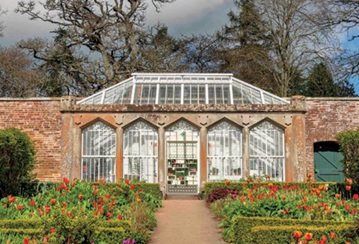Global atmospheric circulation
Contents |
[edit] Introduction
The earth is warmed by the sun to differing degrees, over different areas and in different concentrations. This is because the globe is at an angle to the sun and rotates, meaning certain areas remain closer to the sun over the longer period and therefore remain considerably warmer.
The equator is a relatively thin area but it runs around the globe at its widest point, it also remains closest to the sun as the globe rotates so receives more direct solar energy (or direct insolation) from the sun. On the other hand the suns rays have less opportunity to hit the surface of the Arctic circle, so receive less insolation and thus remain colder.
These variables (as well as others ) impact how air, heat and coolth circulate the globe; global atmospheric circulation. Warm air rises and cold air sinks which can create a simple vertical cell with rotating airflow. As the globe rotates the air at the surface rotates also, so at the equator the air moves faster because it travels further than at the Arctic circle.
So as the warm air at the equator air rises and moves towards the poles it moves faster than the surface of the earth at that point, like wise as air is pulled from the poles down to the equator, it is moving more slowly than the surface as it widens. So air travelling from South to North in effect also moves from West to East and air from the North effectively also moves from East to West, this effect is known as the Coriolis force and forms what is known as the Hadley cell.
These varying effects and the impacts occurring between the extremes create three primary cells that cause atmospheric circulation:
The air rises and sinks as a result of the activity of these cells, and causes a variety high and low pressures at different points on the earths surface:
- Inter-Tropical Convergence Zone (ITCZ) is a low pressure belt is found around the equator.
- Subtropical High at the surface between the Hadley and Ferrel cells.
- Subpolar low at the surface between the polar and Ferrel cell. Air ascends, pressure falls and moist air cools.
- Polar high at the surface below the polar cell. Air ascends, pressure falls and moist air cools.
[edit] Jet streams
Jet streams are narrow variable bands of very strong, predominantly westerly air currents that encircle the globe a few miles above the earth. It is generall accepted that there are typically two or three jet streams in each of the northern and southern hemispheres. The mid latitude jets run between and below the polar and Ferrel cells, whilst the subtropical jets run just below and between the Ferrel and the Hadley cells.
[edit] Related articles on Designing Buildings
- Adaptation.
- Atmosphere.
- Atmospheric pressure.
- Biosphere.
- Climate adaptation.
- Coriolis effect.
- Design Summer Year (DSY)
- Ferrel cell.
- Hadley Cell.
- Hydrosphere.
- Lithosphere.
- Polar cell.
[edit] External links
Featured articles and news
The benefits of engaging with insulation manufacturers
When considering ground floor constructions.
Lighting Industry endorses Blueprint for Electrification
The Lighting Industry Association fully supports the ECA Blueprint as a timely, urgent call to action.
BSRIA Sentinel Clerk of Works Training Case Study
Strengthening expertise to enhance service delivery with integrated cutting-edge industry knowledge.
Impact report from the Supply Chain Sustainability School
Free sustainability skills, training and support delivered to thousands of UK companies to help cut carbon.
The Building Safety Forum at the Installershow 2025
With speakers confirmed for 24 June as part of Building Safety Week.
The UK’s largest air pollution campaign.
Future Homes Standard, now includes solar, but what else?
Will the new standard, due to in the Autumn, go far enough in terms of performance ?
BSRIA Briefing: Cleaner Air, Better tomorrow
A look back at issues relating to inside and outside air quality, discussed during the BSRIA briefing in 2023.
Restoring Abbotsford's hothouse
Bringing the writer Walter Scott's garden to life.
Reflections on the spending review with CIAT.
Retired firefighter cycles world to raise Grenfell funds
Leaving on 14 June 2025 Stephen will raise money for youth and schools through the Grenfell Foundation.
Key points for construction at a glance with industry reactions.
Functionality, visibility and sustainability
The simpler approach to specification.
Architects, architecture, buildings, and inspiration in film
The close ties between makers and the movies, with our long list of suggested viewing.
SELECT three-point plan for action issued to MSPs
Call for Scottish regulation, green skills and recognition of electrotechnical industry as part of a manifesto for Scottish Parliamentary elections.
UCEM becomes the University of the Built Environment
Major milestone in its 106-year history, follows recent merger with London School of Architecture (LSE).
Professional practical experience for Architects in training
The long process to transform the nature of education and professional practical experience in the Architecture profession following recent reports.






















